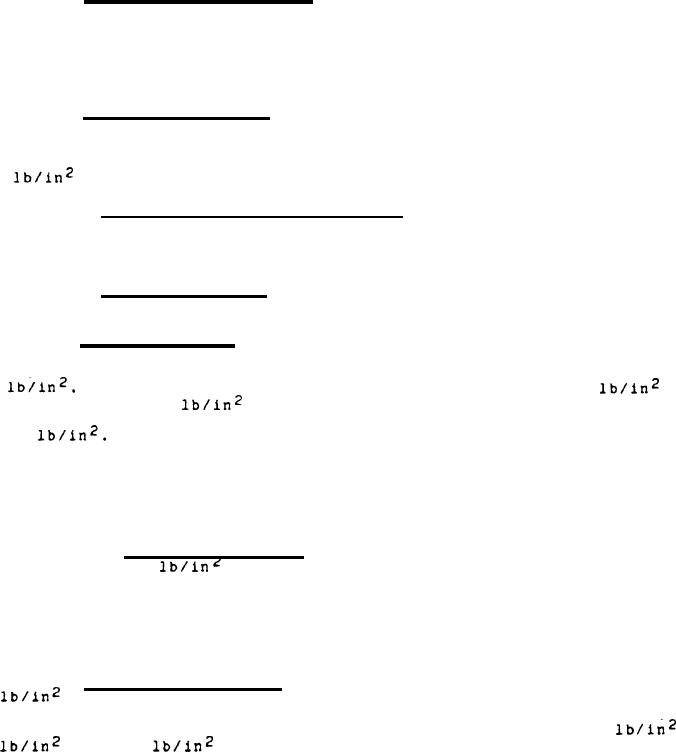 |
|||
|
|
|||
| ||||||||||
|
|  MIL-C-24604(SH)
humidity environment.
The cyclic rate shall not exceed
10 c/m.
Within 24 hours of removal from the humid
environment, the cylinder shall then be subjected to the
hydrostatic burst test (see 4.6.7) to determine conformance
with 3.3.3.
For delay in burst testing see 4.6.9.
4.6.7 Hydrostatic burst test. The cylinder shall be hydrostatically
pressurized for 3 minutes to the specified minimum burst pressure at a
temperature of from 65F to 95F.
After the 3 minute period, the pressure
shall then be increased to failure of the cylinder.
The burst pressure
and type of failure shall be recorded.
The rate of pressure rise shall
be in accordance with 4.5.3.
4.6.8 Fragmentation test. Fragmentation test shall be conducted
as specified in 4.6. 8.1 through 4.6.8.3.
4.6.8.1
Pressure. The cylinder shall be pneumatically charged to
5000
pressure ambient temperature.
4.6.8.2
Fragmentation test conditions. The ammunition shall be
0.30 caliber armor piercing and shall be fired at a muzzle velocity of
2800 + 100 feet per second (ft/s).
The range from the gun to the cylinder
snail-be not more than 50 yards.
Failure criteria.
4.6.8.3
The cylinder shall meet the requirements
of 3.3.6.
Soak cycle test. The cylinder shall be placed in a chamber
4.6.9
that has an environment of 120F and not less than 95 percent relative
humidity.
The cylinder shall be pressurized hydrostatically to
6300
Each day the cylinder shall be cycled from 6300
to
zero pressure to 6300
for a total of 4 cycles per day at a rate
of approximately 1 elm.
Between cycles, the pressure shall be maintained
at 6300
Test shall be continued for at least 30 consecutive days
without evidence of damage.
Within 24 hours of removal from the humid
environment, the cylinder shall be subjected to the hydrostatic burst test
as specified in 4.6.7 and shall meet the requirements of 3.3.7.
A cylinder
may be transported or temporarily stored so long as the exposure to
ambient, prior to burst testing, is less than 24 hours.
4.6.10 Pressure storage test. The cylinder shall be pneumatically
pressurized to 6300
and stored in a continuous environmental
condition of 120F and not less than 95 percent relative humidity for 15
days.
Within 24 hours of completion of this exposure, the cylinder shall
be subjected to the hydrostatic burst test as specified in 4.6.7 and shall
comply with the requirements of 3.3.8.
For delay in burst testing see
4.6.9.
4.6.11
Humidity cycle test. The cylinder shall be pressurized to
6300
and placed in an environment of 120F at not less than 95
percent relative humidity.
After conditioning for at least 96 hours, the
cylinder shall be subjected to 500 cycles of pressure from 6300
to O
to 6300
without failure.
The cycle rate shall not
exceed 10 elm.
Within 24 hours of completion of the test, the cylinder
shall be subjected to the hydrostatic burst test (see 4.6.7) to determine
conformance with 3.3.9.
For delay in burst testing see 4.6.9.
12
|
|
Privacy Statement - Press Release - Copyright Information. - Contact Us |